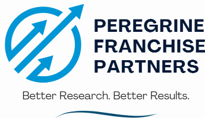What are the main ways to finance a franchise?
While there are many financing methods available, four primary options have proven most effective for franchise buyers: 401(k) business financing (ROBS), SBA loans, portfolio loans, and unsecured loans. Each has unique advantages and requirements that suit different situations.
How does 401(k) business financing (ROBS) work?
ROBS allows you to use retirement funds to start your franchise without paying taxes or penalties. Think of it as investing your retirement money in your own business instead of stocks or mutual funds.
Key Details About ROBS:
- Minimum Requirements:
At least $40,000 in eligible retirement funds
Must be an active employee in the new business
Funds can come from 401(k), IRA, 403(b), or TSP accounts
- Main Benefits:
Avoid early withdrawal penalties and taxes
No debt or monthly payments
Keep more of your monthly profits
Funding typically complete in 3 weeks
- Important Considerations:
Requires setting up a new corporation
Must follow strict IRS rules
Puts retirement savings at risk if business fails
- Annual administration fees apply
How do SBA loans work for franchise financing?
SBA loans are government-backed loans that offer some of the best terms available. They’re like traditional bank loans but with more flexible requirements and better interest rates.
Understanding SBA Loans:
- Requirements:
Credit score of 680 or higher
20-30% down payment
Some business or management experience
Clean personal financial history
- Key Benefits:
- Lower interest rates than most options
Longer repayment terms (up to 25 years)
Can finance multiple business needs
Multiple loan programs available
- Timeline and Process:
Pre-qualification (1-2 weeks)
Application and documentation (2-3 weeks)
Underwriting (3-4 weeks)
Closing (1-2 weeks)
What are portfolio loans and how do they work?
Portfolio loans let you borrow against your investment portfolio without selling your stocks or bonds. It’s similar to a home equity loan, but using investments instead of real estate as collateral.
Portfolio Loan Details:
Requirements:
Minimum $85,000 in eligible securities
Stocks must trade above $5 per share
No minimum credit score
- Clean investment history
- Advantages:
Keep your investments working for you
Usually lower interest rates than unsecured loans
Faster approval than SBA loans
Possible payment deferral options
- Risks and Considerations:
Market fluctuations can affect loan terms
Possible margin calls if investments drop
May need to maintain certain portfolio values
Interest rates can be variable
How do unsecured loans fit into franchise financing?
Unsecured loans are based primarily on your creditworthiness, requiring no collateral. They’re like personal loans but sized for business purposes.
Understanding Unsecured Loans:
- Requirements
Credit score of 690 or higher
Strong personal income history
Low credit utilization
Clean credit history
Benefits
No collateral required
Quick funding (often under 3 weeks)
Flexible use of funds
Can help build
business credit
- Important Factors
Higher interest rates than secured loans
Shorter repayment terms
Usually smaller loan amounts
Personal guarantee required
How should I choose between these options?
Consider These Factors:
- Your Financial Situation:
Available retirement funds
Credit score
Investment portfolio
Personal savings
- Risk Tolerance:
Comfort with using retirement funds
Ability to handle debt payments
Willingness to pledge collateral
- Time Constraints:
How quickly you need funding
Your franchise’s opening timeline
Seasonal considerations
- Business Needs:
Total funding required
Working capital needs
Equipment purchases
Real estate requirements
Can I combine different financing options?
Yes, many successful franchise buyers use multiple funding sources. Here’s how to approach combining options:
Common Combinations:
- ROBS + SBA Loan:
Use ROBS for down payment
SBA loan for remaining costs
Reduces total debt burden
- Portfolio Loan + Unsecured Loan
Portfolio loan for main funding
Unsecured loan for working capital
Maintains investment strategy
- SBA Loan + Personal Assets
SBA loan for majority funding
Personal assets for down payment
- Optimizes available capital
What steps should I take to get started?
Action Plan:
- Assess Your Resources
Check retirement account balances
Review investment portfolios
Get current credit reports
Calculate available savings
- Gather Documentation
Tax returns (last 3 years)
Personal financial statement
Bank statements
Investment account statements
- Create a Business Plan
Financial projections
Market analysis
Operating plan
Management team
- Consult Professionals
Financial advisor
Franchise consultant
Tax professional
Business attorney
Common Mistakes to Avoid:
- Not Starting Early Enough
Begin financing process 3-6 months before needed
Allow time for delays
Consider seasonal timing
- Overlooking Working Capital
Calculate first-year expenses
Include personal living expenses
Plan for unexpected costs
Build in safety margins
- Focusing Only on Monthly Payments
Consider total cost of financing
Factor in fees and charges
Understand tax implications
Project long-term impact
- Not Having a Backup Plan
Prepare alternative funding options
Build emergency reserves
Consider worst-case scenarios
Plan for growth needs
Moving Forward Successfully
Choosing the right financing option is crucial for your franchise’s success. Remember these key points:
- Take Your Time
Research thoroughly
Compare multiple options
Understand all terms
Ask questions
- Stay Organized
Keep good records
Track application progress
Maintain copies of everything
Follow up regularly
- Build Your Team
Work with experienced professionals
Stay in communication
Keep franchise seller informed
Coordinate efforts effectively
- Think Long-Term
Plan for growth
Consider future financing needs
Build strong banking relationships
Maintain good records
Remember, financing your franchise is just the first step in your business journey. Choose options that not only get you started but position you for long-term success.
